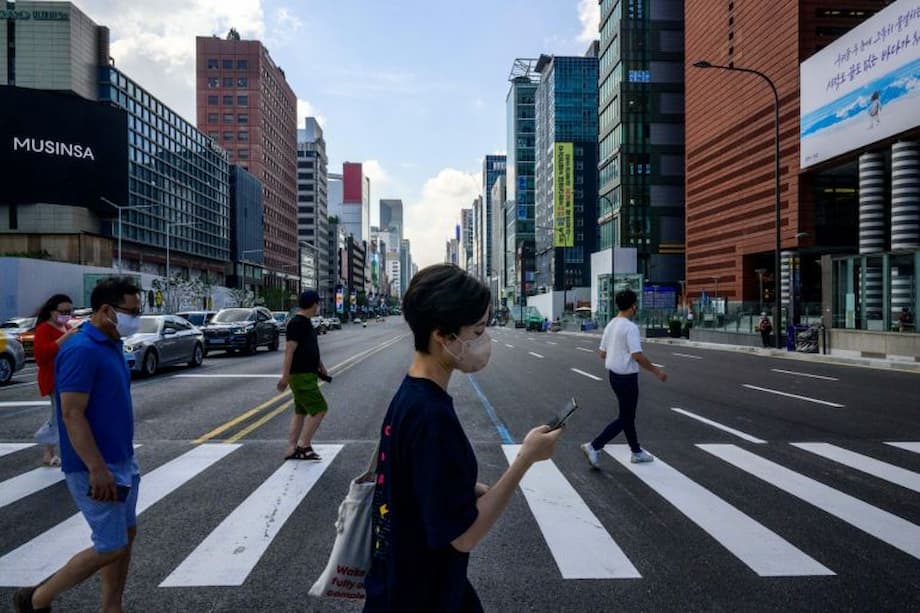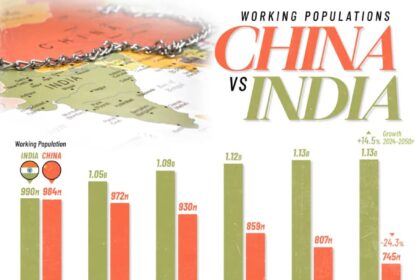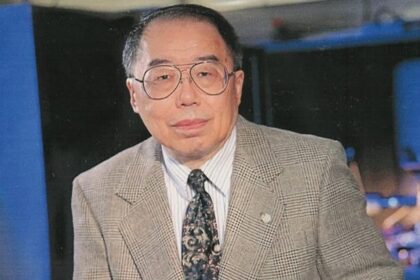A shift in schedules gains momentum
In a country where long hours have long defined working life, South Korea is experimenting with shorter weeks that give people more time away from the job. Early results are drawing attention. Staff at a major Seoul hospital report better health and lower turnover after moving to a four day workweek, while a large province around the capital has launched a pilot that shortens Fridays or trims weekly hours without cutting pay. IT firms and large conglomerates are expanding flexible schedules, and the national government has vowed to reduce work hours below the OECD average by 2030 and explore a four and a half day week. The change is cautious and uneven, yet increasingly visible across sectors.
- A shift in schedules gains momentum
- Public policy push puts money on the table
- What the numbers say so far
- Shorter weeks spread through offices and labs
- Lessons from global trials
- The productivity and cost debate
- Why work hours matter in South Korea
- Can essential services adapt
- What workers and campaigners say
- What to watch next
- The Bottom Line
The shift is a response to a harsh reality. South Korean employees worked an average of 1,865 hours in 2024, according to data cited by multiple reports, far above the typical level in advanced economies and higher than neighboring Japan. Long days come with health costs, burnout, and difficulties balancing family responsibilities. The new trials test whether a shorter week can improve lives without hurting output, and whether costs can be managed in sectors that require constant staffing.
One of the most closely watched experiments is at Severance Hospital in Seoul, the first hospital in the country to try a four day workweek for nurses. The pilot began in 2023 after an agreement between management and the labor union. Participants receive three days off per week and rotate into the schedule in six month stints. The trade off is a 10 percent pay reduction, a concession many nurses say is worth it for gains in rest, recovery, and family time.
The human story is compelling. Nurses say they rely less on relatives for childcare, reclaim time for medical training and recovery, and return to shifts with more attention to detail. Reports from the Korea Worker Institute and Union Center, which evaluated the program, point to improved health and well being among nurses, better quality of medical services, more efficient teamwork on the ward, lower turnover, and fewer sick days. At Severance, the resignation rate for nurses with less than three years of experience fell steeply during the pilot period in the first year tracked. A separate review presented at the National Assembly detailed continued gains into a second year and an expansion of the trial to more wards, suggesting the model can be scaled with the right staffing support.
Public policy push puts money on the table
The national conversation has shifted since the election of President Lee Jae myung, whose administration has pledged to reduce work hours below the OECD average by 2030 and to develop a four and a half day week. A concrete test is under way in Gyeonggi Province, which surrounds Seoul and is home to more than a quarter of the country’s population. The province announced a pilot to shorten working time at 50 private companies and public organizations, offering three options: a four day week every other week, a 35 hour week, or a half day every Friday. The province will cover wage gaps that arise when hours are cut, a key incentive for smaller employers that fear added cost.
Officials set aside an initial budget of 250 million won as part of a plan to spend up to 10 billion won per year to expand the effort. The five month pilot is scheduled to begin in October, pending final assembly approval. Provincial leaders say the targets are straightforward: help companies test schedules that improve work life balance, lift quality of life, and, in the long term, support happier families and, ideally, a reversal of the falling birth rate. The program’s design aims to create evidence about which sectors and job types adapt best, and what payroll support is required to sustain shorter weeks without reducing service levels.
Politics are part of the story. Members of the provincial council from the conservative People Power Party criticized the rollout process, saying it lacked sufficient consultation. At the same time, the Gyeonggi Provincial Government Civil Servants Union backed the pilot and urged broader adoption if results show benefits. The debate maps closely to a national divide: the public mood favors better balance, while many managers remain uneasy about costs and coordination.
What the numbers say so far
Severance Hospital’s pilot is an early source of data. The hospital labor union reported drops in turnover among younger nurses, fewer sick days per employee, and improved scores on surveys of care quality. In one data set tracked by outside researchers, the resignation rate for nurses with less than three years of experience fell from double digits to single digits in the first year. A follow up assessment presented at the National Assembly said the rate fell again in the second year as the pilot expanded to more wards at the main hospital in Sinchon and at Gangnam Severance. The hospital assigned additional nursing staff to support the lighter schedules, a practical step that made the changes workable on the floor.
The director of the Korea Worker Institute and Union Center, Kim Jong jin, briefed lawmakers on the broader effects observed in the Severance trial, including teamwork and safety on wards. He said the reduced hours did not simply give nurses a day off. In his view, the shift changed how teams coordinated work, how errors were prevented, and how staff approached their time off for training and family responsibilities. Kim summarized the findings plainly.
“The four day workweek pilot program has shown positive effects across personal, organizational, and social areas, including work life balance, work collaboration, improvement in medical quality, reduction in patient safety risks, and increased opportunities for travel, education, and social relationships,” Kim said.
Hospital leaders acknowledge the gains, yet they have raised a hard constraint: cost. The head of the hospital, Dr. Lee Kang young, warned that continuing the program at scale would require support outside the hospital budget. He argued that the sector needs a structural plan to train and deploy more nurses so that shorter weeks do not stretch existing staff too thin.
“For the four day workweek to be sustainable, institutional and financial support is absolutely necessary,” Dr. Lee said.
Human resources officials at the parent system, Yonsei University Health System, have put numbers to the challenge. Kwon Young sik, the system’s HR director, estimated that moving nurses to a four day schedule costs roughly 100 million won per ward in labor expenses alone, with multi ward programs running into hundreds of millions of won over a year. The hospital said it has spent about 1.2 billion won on extra staffing across three years of trials. Leaders insist they want to keep and expand the model, but only within a framework that a large hospital can afford.
Shorter weeks spread through offices and labs
While healthcare tests whether lighter schedules can fit continuous patient care, the private sector has moved faster. IT firms and startups that compete for talent are offering periodic Friday offs, shorter daily hours, and flexible start times. Major conglomerates, including Samsung, SK Group, and Kakao, have rolled out a mix of options that cut commute days or let teams choose when and where to work. These changes are not uniform, and most are not strict four day weeks. Yet they share a common aim: attract and keep skilled workers in a tight labor market without sacrificing output.
At Kakao VX, a digital services subsidiary, employee Lee Jae ho benefits from periodic Fridays off and slightly shorter hours during certain stretches of the year. He says the arrangement makes time for family and personal development while keeping his team on target. He has observed no hit to efficiency in sprints where the group has planned work carefully and eliminated unnecessary meetings. His experience mirrors many office pilots around the world. Teams that tie shorter weeks to clear goals and fewer low value tasks often find that output holds steady, even as workers feel less stressed.
Lessons from global trials
The global record offers useful benchmarks. In the United Kingdom, a recent pilot run by the 4 Day Week Foundation and academic partners ended with all 17 participating employers continuing with the model. The organizer, Joe Ryle, pointed to stronger retention, fewer sick days, and revenue gains at several firms. An earlier UK trial in 2022, the largest to date, found that most of the 61 companies kept the new schedule, and employees reported lower burnout and better work life balance.
Different models exist. The now familiar 100 80 100 approach promises 100 percent of pay for 80 percent of the time in exchange for a commitment to maintain 100 percent of output. Some governments favor compressed weeks that keep total hours constant. Belgium allows employees to work standard weekly hours over four days if they choose, a change that does not cut overtime. The United Arab Emirates moved most government staff to a four day week, setting a wider norm for private firms. Iceland’s large public sector trial helped spur broad adoption of shorter hours across the economy. Microsoft Japan reported a 40 percent jump in revenue per employee during its trial, even though it did not make the shift permanent.
These results do not mean every business will benefit from shorter weeks. They do show that clear goals, better processes, and smarter meeting policies can make lower hours sustainable in many settings. For South Korea, where long schedules are deeply rooted, the global data helps answer a basic question of feasibility for office heavy work.
The productivity and cost debate
Employers in South Korea voice two consistent worries. The first is productivity. Managers fear that four day schedules could slow projects or complicate coordination when teams are spread across different days off. The second is cost. In sectors that require constant coverage, fewer days of work per person often means hiring more people or paying more overtime. Healthcare, hospitality, and emergency services must plan for staff in place every day, so schedule changes can be expensive if staffing levels are tight.
Analysts who track flexible work caution against one size fits all solutions. An assessment published by regional HR outlets notes that trials need careful design, and that some employees report stress when they feel they must simply cram five days of tasks into four days. Employers that succeed tend to cut low value work, redesign jobs, and invest in collaboration tools so that handoffs are smooth. They also choose models that match customer needs. If clients require support five to seven days a week, leaders may prefer a 35 hour week spread over five days or rotating Fridays off instead of shutting down on a fixed day.
Evidence from the region suggests openness coupled with caution. A large survey in Singapore reported that 69 percent of employers view a four day workweek as feasible and potentially helpful for productivity, yet only 18 percent have plans to try it in the near term. Human resources experts there stress that success depends on planning, cultural change inside firms, and a willingness to adapt based on feedback. The same holds in Korea. Many companies now use flexible tools, including remote work, variable hours, and seasonal schedule adjustments, to meet employee needs while keeping customer service steady across the week.
Why work hours matter in South Korea
South Korea’s standard workweek is capped at 52 hours, made up of 40 regular hours plus up to 12 hours of overtime. The cap was introduced nationwide in 2018 to curb extreme overwork, yet national averages remain high, and weekends often include extra duties. Reformers argue that long schedules push people toward burnout, make it harder to raise children, and blunt the creative thinking needed in a service and technology driven economy.
Gyeonggi Province’s pilot spells out broader goals. Provincial leaders say they want to improve quality of life, raise happiness, and, if extended across society, help address a falling birth rate by making family time easier to secure. The logic is simple. When people are less exhausted, they tend to participate more in family and community life. Employers may also see benefits in hiring and retention, especially in fields that struggle with churn among young workers.
South Korea’s efforts follow a global trend that accelerated after the pandemic. In many countries, younger workers in particular place a higher value on balance than prior cohorts did. In places as different as the UK, Australia, and South Africa, companies that tested shorter weeks reported reduced burnout and fewer sick days. These results do not settle every debate, yet they show that a shorter week can be a valid option in many settings if leaders make smart changes to how work gets done.
Can essential services adapt
Healthcare shows both promise and constraints. Severance Hospital’s experience suggests that nurses who receive more rest provide better care and are less likely to leave. Observers reported that patient safety risks declined as fatigued nurses had more time to recover between shifts. At the same time, staffing shortages remain real in many hospitals. The Ministry of Health and Welfare has stated that reducing work hours in nursing requires more personnel, and that any expansion should include plans to train and retain more licensed staff.
Sectors that must provide service every day face similar choices. Leaders can explore rotating short days, spread reduced weekly hours across five days, or give different teams alternating Fridays off. Each approach requires careful scheduling to avoid gaps in coverage. Several companies outside healthcare have shown that creative staffing and clear metrics can make shorter weeks work even in customer facing jobs. Yet managers warn that the transition can be bumpy if teams are not prepared and roles are not redesigned to match the new rhythm.
What workers and campaigners say
Workers who have tried shorter weeks in Korea tend to highlight personal time, better sleep, and renewed focus at work. Nurses in the Severance trial described arriving on the ward less fatigued and more attentive to patients. IT staff described fewer distractions and more time for learning new skills. For campaigners who push the four day model, the experience aligns with a growing international evidence base.
Joe Ryle, campaign director at the 4 Day Week Foundation, helped oversee recent trials in Britain. He argues that the model can support both people and profits when leaders cut waste and focus on results rather than hours.
“Staff well being, business performance, productivity, job retention, and recruitment all improved, with businesses and employees thriving,” Ryle said of the latest UK cohort that kept shorter weeks after the trial.
Back in Seoul, hospital leaders walk a line between recognizing gains and calling for help to pay for them. That tension mirrors the wider puzzle for policymakers. The potential benefits are real. The costs and staffing requirements are real too. The next phase of Korea’s experiment will test whether government support, smarter scheduling, and targeted training can bring those pieces together.
What to watch next
Several milestones will determine how far and how fast shorter weeks spread. Gyeonggi Province’s pilot, set to begin in October if approved, will generate data on costs, productivity, and employee health across 50 workplaces. The findings will inform how support is structured, which sectors are best suited for expansion, and whether different models deliver better results. Nationally, the administration has set a target to bring hours below the OECD average by 2030, a goal that may be reached through a mix of shorter weeks, flexible hours, and limits on overtime enforcement. Large companies will keep experimenting, often with hybrid models that fit project cycles and customer needs. Hospitals will need dedicated funding and training programs to scale up shorter schedules without risking coverage.
The story is moving from proof of concept to policy design. If pilots continue to show better health, stronger retention, and steady productivity, leaders will have a clearer case to expand. If costs prove hard to manage, support will need to be more tightly focused. Either way, South Korea has entered a new phase of work culture reform that is already reshaping daily life for many people.
The Bottom Line
- Severance Hospital in Seoul ran a four day workweek trial for nurses and reported lower turnover, fewer sick days, and improved care quality.
- The hospital’s leaders say continued adoption requires more staffing and external funding to cover higher labor costs.
- Gyeonggi Province launched a pilot for shorter weeks at 50 workplaces, with the government covering wage gaps and multiple scheduling options.
- South Korean workers logged about 1,865 hours in 2024, well above typical levels in advanced economies, raising interest in shorter weeks.
- Major firms such as Samsung, SK Group, and Kakao offer flexible work programs, and many IT teams report no loss in productivity.
- Global trials in the UK and elsewhere show strong retention and health gains under shorter weeks when jobs are redesigned for focus and efficiency.
- The administration of President Lee Jae myung has pledged to cut hours below the OECD average by 2030 and explore a four and a half day week.
- Key challenges include staffing in essential services, coordination across teams, and the budget needed to support reduced hours.












